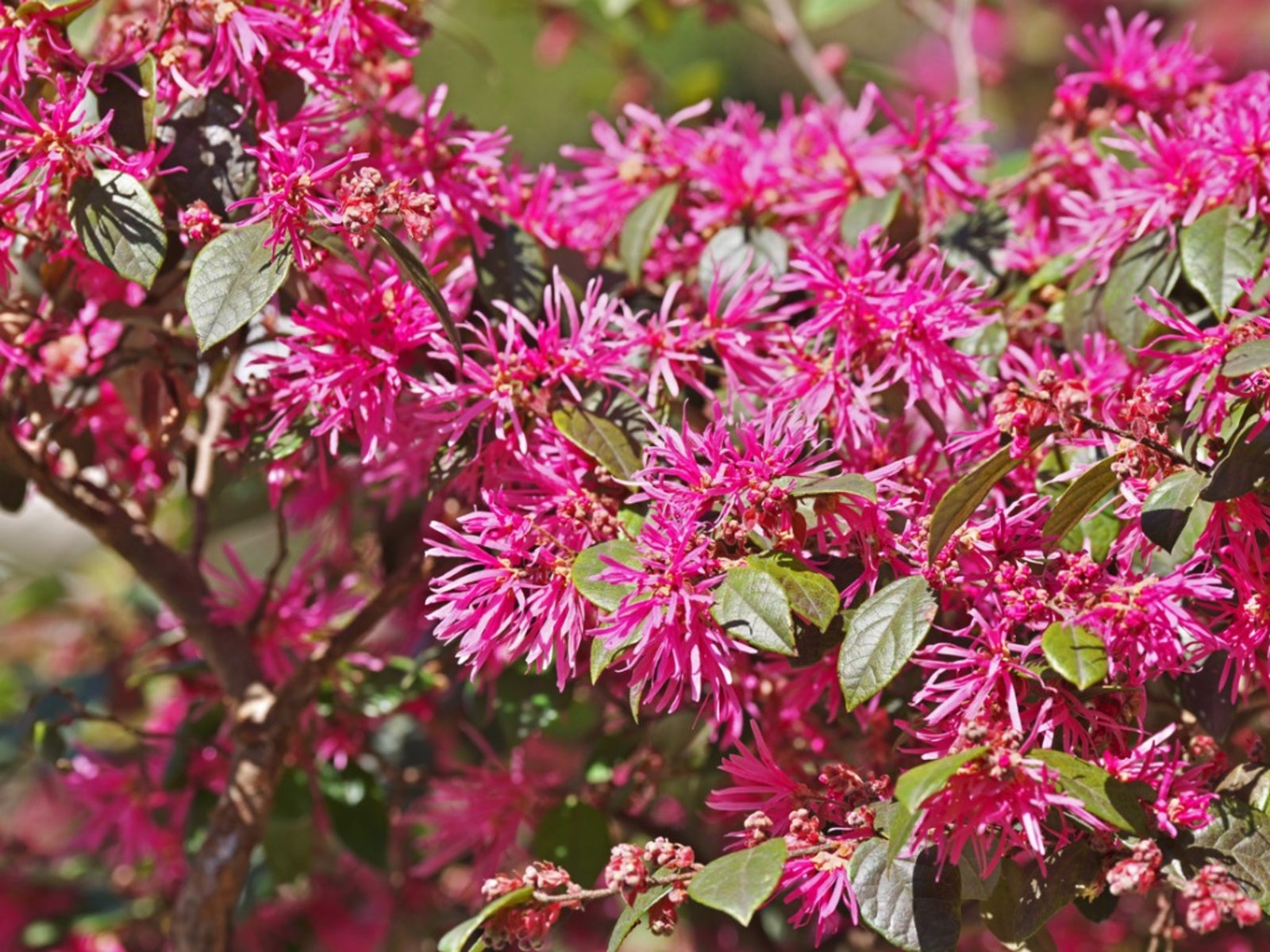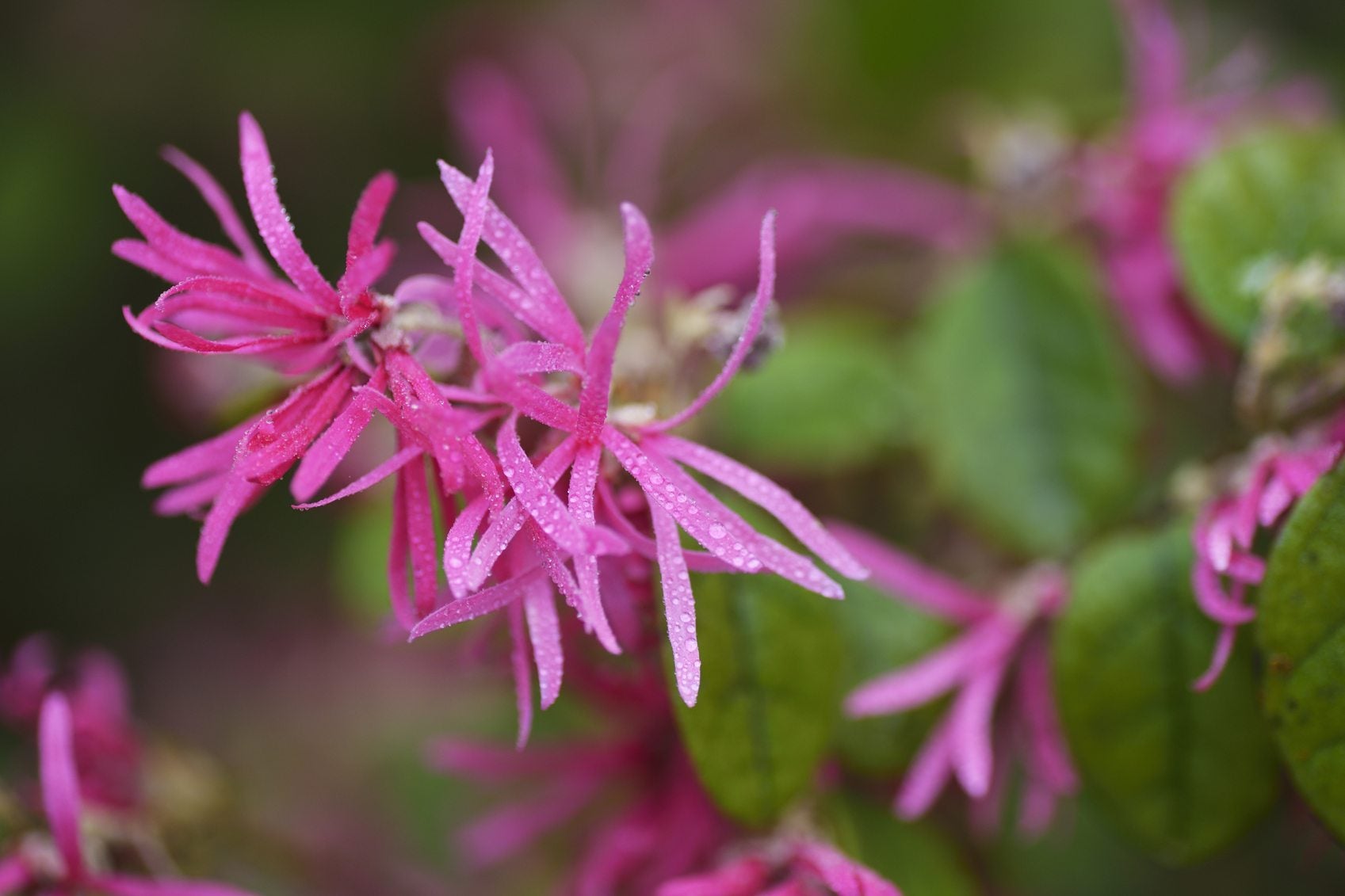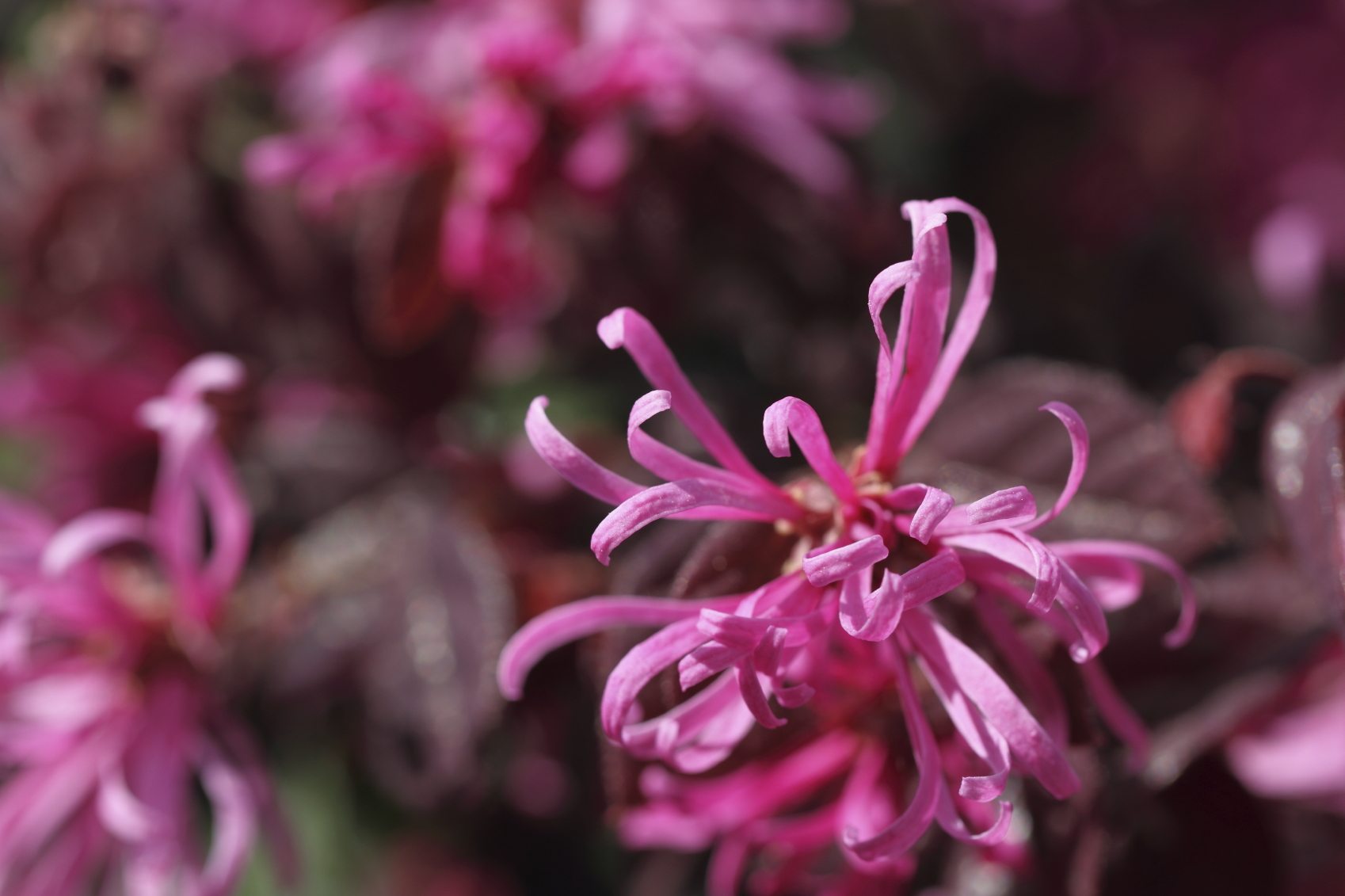Loropetalum Chinese Fringe Shrubs: How To Care For Loropetalum Plants


Next time you are outdoors and detect an intoxicating scent, look for an unassuming evergreen shrub decorated with fringy white flowers. This would be the Chinese fringe plant, or Loropetalum chinense. Loropetalum plants are easy to cultivate in USDA plant hardiness zones 7 to 10. Some varieties are hardier than others. Choose the right cultivar and then learn how to care for Loropetalum so the delightful fragrance can perfume your yard.
About Chinese Fringe Plants
Loropetalum plants are native to Japan, China, and the Himalayas. The plants may be as tall as 10 feet (3 m.) but are usually small trees of 5 feet (1.5 m.). The leaves are oval and glossy green, set on stems with crinkly brown bark. Blooms appear in March to April and last for up to two weeks on the stems. These flowers are 1 to 1 ½ inch (2.5-4 cm.) long and made up of long and slender, strappy petals. Most varieties are white to ivory but there are some Chinese fringe shrubs that are in bright pinks with purple leaves. An interesting fact about Chinese fringe plants is their longevity. In their native habitat there are specimens that are over one hundred years old and 35 feet (11 m.) tall.
Loropetalum Plants
There are several cultivars of Chinese fringe. These include:
- The Hillier form has a spreading habit and may be used as a groundcover
- Snow Muffin is a dwarf plant only 18 inches (46 cm.) tall with small leaves
- The popular Snow Dance is a dense compact shrub
- Razzleberri produces bright pinkish red fringe flowers
Whichever cultivar you choose, growing Loropetalum shrubs requires sun to partially sunny locations and organic rich soil.
How to Care for Loropetalum
These plants are low maintenance and not terribly fussy. Their lighting requirements range from part sun to full sun; and although they prefer rich soil, they can also grow in clay. The plants may be pruned to keep them in a smaller size. Pruning is done in early spring and a light application of slow-release fertilizer right around the same time will enhance the plant's health. Chinese fringe plants are tolerant of drought once established. A layer of mulch around their root zones will help reduce competitive weeds and conserve moisture.
Uses for Loropetalum Shrubs
The Chinese fringe plant makes an excellent border or specimen. Plant them together as a screen or along the edges of the home as foundation plants. The larger cultivars also assume the form of small trees when the lower limbs are removed. Be careful not to over prune as the limbs lose their natural shape. The more adventurous gardener might want to try to espalier these beautiful shrubs or even bonsai the plant for a pot bound display. Growing Loropetalum shrubs as groundcovers is easy if you choose a low growing cultivar like Hillier. Occasionally prune the errant vertical stems to help the appearance.
Gardening tips, videos, info and more delivered right to your inbox!
Sign up for the Gardening Know How newsletter today and receive a free copy of our e-book "How to Grow Delicious Tomatoes".

Bonnie Grant is a professional landscaper with a Certification in Urban Gardening. She has been gardening and writing for 15 years. A former professional chef, she has a passion for edible landscaping.
-
 Looking For Plants To Give You The Soft And Fuzzies? Try These 5 Fuzzy Leaf Plant Options
Looking For Plants To Give You The Soft And Fuzzies? Try These 5 Fuzzy Leaf Plant OptionsLovers of texture, drama, silver foliage and tactile plants will adore these special sensory garden additions. These fuzzy leaf plant options will leave you all aglow
By Susan Albert
-
 Get Ready For A Summer Of Hummers! Grow These Full Sun Hummingbird Plants and Flowers
Get Ready For A Summer Of Hummers! Grow These Full Sun Hummingbird Plants and FlowersIf you’re lucky enough to enjoy a sunny backyard, make sure you are maxing out on your pollinator opportunities and grow these full sun hummingbird plants and flowers
By Tonya Barnett
-
 Chinese Fringe Plant Feeding: Tips On Fertilizing Chinese Fringe Flowers
Chinese Fringe Plant Feeding: Tips On Fertilizing Chinese Fringe FlowersWith proper fertilization, Chinese fringe plant grows up to 8 foot tall with has lush, full green foliage and is full of unique witch hazel-like flowers. If your Chinese fringe plant does not look lush and healthy, learn how to fertilize Chinese fringe plants here.
By Darcy Larum
-
 Pruning Overgrown Loropetalums: When And How To Prune A Loropetalum
Pruning Overgrown Loropetalums: When And How To Prune A LoropetalumIf your Loropetalum shrub outgrows the space you have allotted for it in the garden, you may start asking how to prune a loropetalum. Pruning this plant is easy. For tips on pruning a loropetalum, click on this article.
By Teo Spengler
-
 Loropetalum Is Green Not Purple: Why Are Loropetalum Leaves Turning Green
Loropetalum Is Green Not Purple: Why Are Loropetalum Leaves Turning GreenOccasionally, your Loropetalum may be green, not purple or the other hues in which it comes. There is a very simple reason for this and the following article explains why.
By Bonnie L. Grant